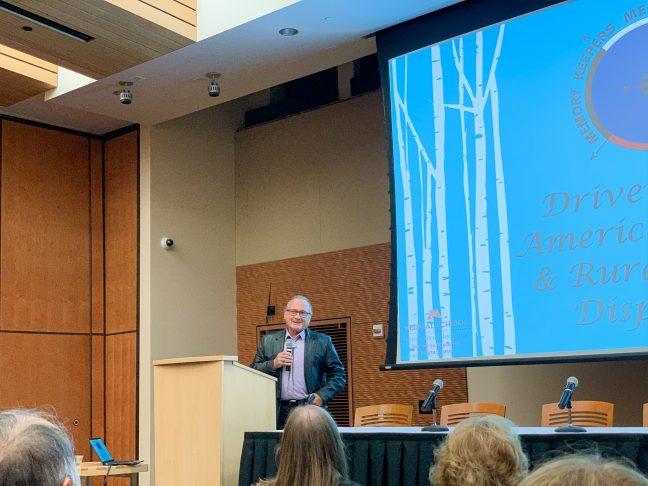A Univeristy of Minnesota professor spoke on the connection between diabetes and dementia among indigenous people, as well as preventative options at Wisconsin Alzheimer’s Disease Research Center’s annual fall lecture Wednesday evening.
University of Minnesota family medicine professor Neil Henderson noted a strong connection between diabetes and dementia but assured the audience that having diabetes does not necessarily lead to dementia. Henderson said where there is more diabetes, there tends to be more dementia, adding that good management of type two diabetes could also prevent dementia.
“Just because someone has type two diabetes does not mean that they will get dementia,” Henderson said. “It’s a risk factor. More importantly, if it is managed well, that can be a neuroprotective all by itself.”
Researchers find new ways to improve moods in dementia patients, caregivers
Managing diabetes well, however, is a challenge, Henderson said. He said people live in a world surrounded by food marketed to them through a phenomenon called “neuromarketing.” Henderson used marshmallows as an example of neuromarketing — the packaging said “fat free” and “gluten-free” but failed to mention a higher amount of sugar.
Another challenge for managing diabetes in the United States is the cost of insulin. According to BBC News, the patent for insulin was first sold for $1, but today all three major brands are sold in the $300 range. Henderson said money affects the health of individuals.
“Very broadly, the more money the person has the more health they have,” Henderson said.
Henderson also spoke about the prevalence of diabetes in the indigenous community. He said type two diabetes is three times more present than in the rest of the population. Henderson also shared the statistic that of those who died of diabetes in the U.S. in 2010: 23.2% were Native Americans.
Henderson said indigenous culture described dementia differently and explained in that culture someone with dementia is described as “seeing things we don’t” instead of “seeing things that aren’t there.” When a Native American with dementia begins speaking more lucidly, Henderson explained that friends and family will sing prayer songs, as it is believed they are looking into “the other side.” Henderson said his grandmother experienced this when she passed.
“They said they sang her over to the other side,” Henderson said.
Why celebrating Indigenous history is more important than celebrating genocide
Henderson said dementia, a disease caused by many different things, generates different responses across cultures. Henderson said being aware of these different interpretations could greatly benefit research.
Henderson took the time to thank the caregivers, professors and the ADC for the work they do.
“You all right here in this room in Madison really are among academic research stars,” Henderson said. “Just because they’re local doesn’t mean they’re not stars — national and international stars.”


















